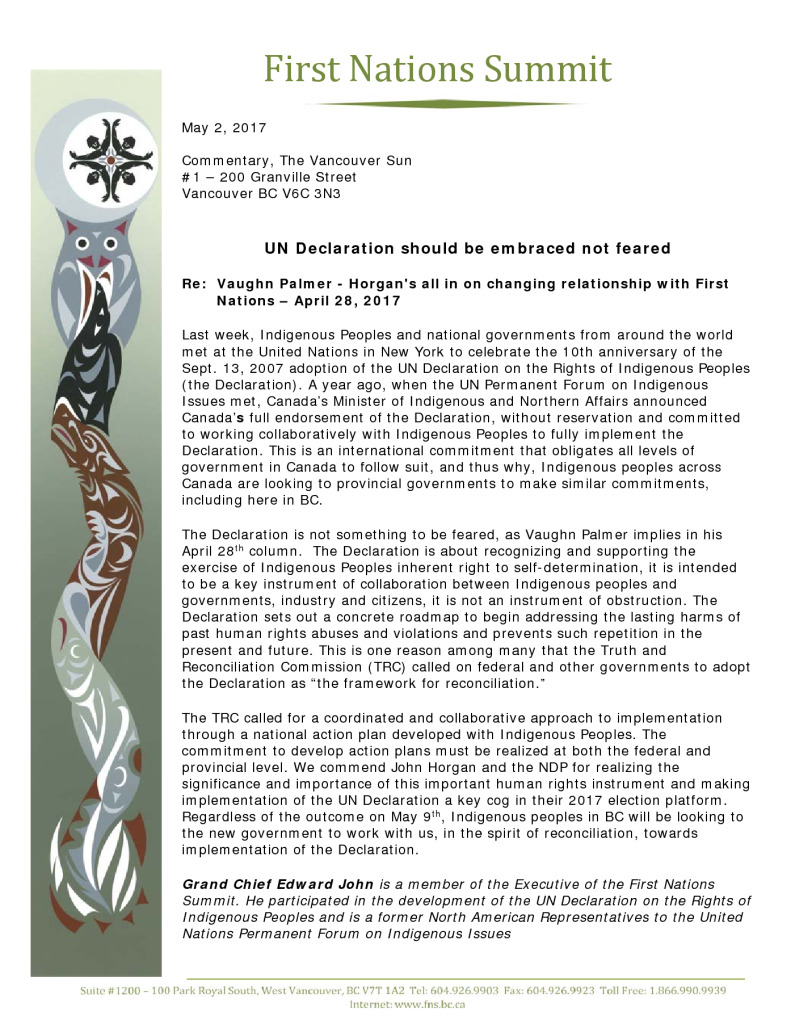Last week, Indigenous Peoples and national governments from around the world met at the United Nations in New York to celebrate the 10th anniversary of the Sept. 13, 2007 adoption of the UN Declaration on the Rights of Indigenous Peoples (the Declaration). A year ago, when the UN Permanent Forum on Indigenous Issues met, Canada’s Minister of Indigenous and Northern Affairs announced Canada’s full endorsement of the Declaration, without reservation and committed to working collaboratively with Indigenous Peoples to fully implement the
Declaration. This is an international commitment that obligates all levels of government in Canada to follow suit, and thus why, Indigenous peoples across Canada are looking to provincial governments to make similar commitments, including here in BC.
The Declaration is not something to be feared, as Vaughn Palmer implies in his April 28th column. The Declaration is about recognizing and supporting the exercise of Indigenous Peoples inherent right to self-determination, it is intended to be a key instrument of collaboration between Indigenous peoples and governments, industry and citizens, it is not an instrument of obstruction. The Declaration sets out a concrete roadmap to begin addressing the lasting harms of past human rights abuses and violations and prevents such repetition in the present and future. This is one reason among many that the Truth and Reconciliation Commission (TRC) called on federal and other governments to adopt the Declaration as “the framework for reconciliation.”

